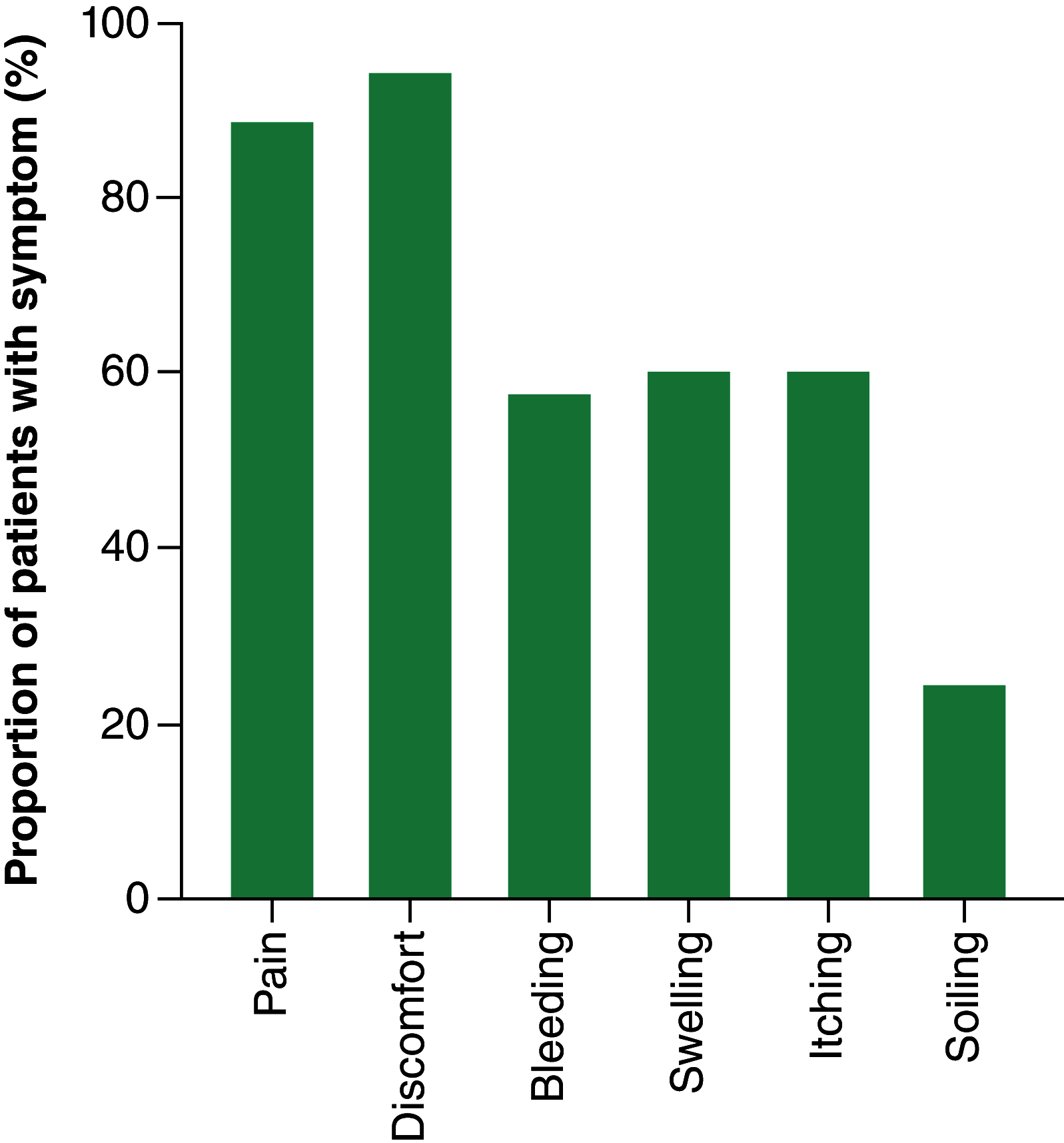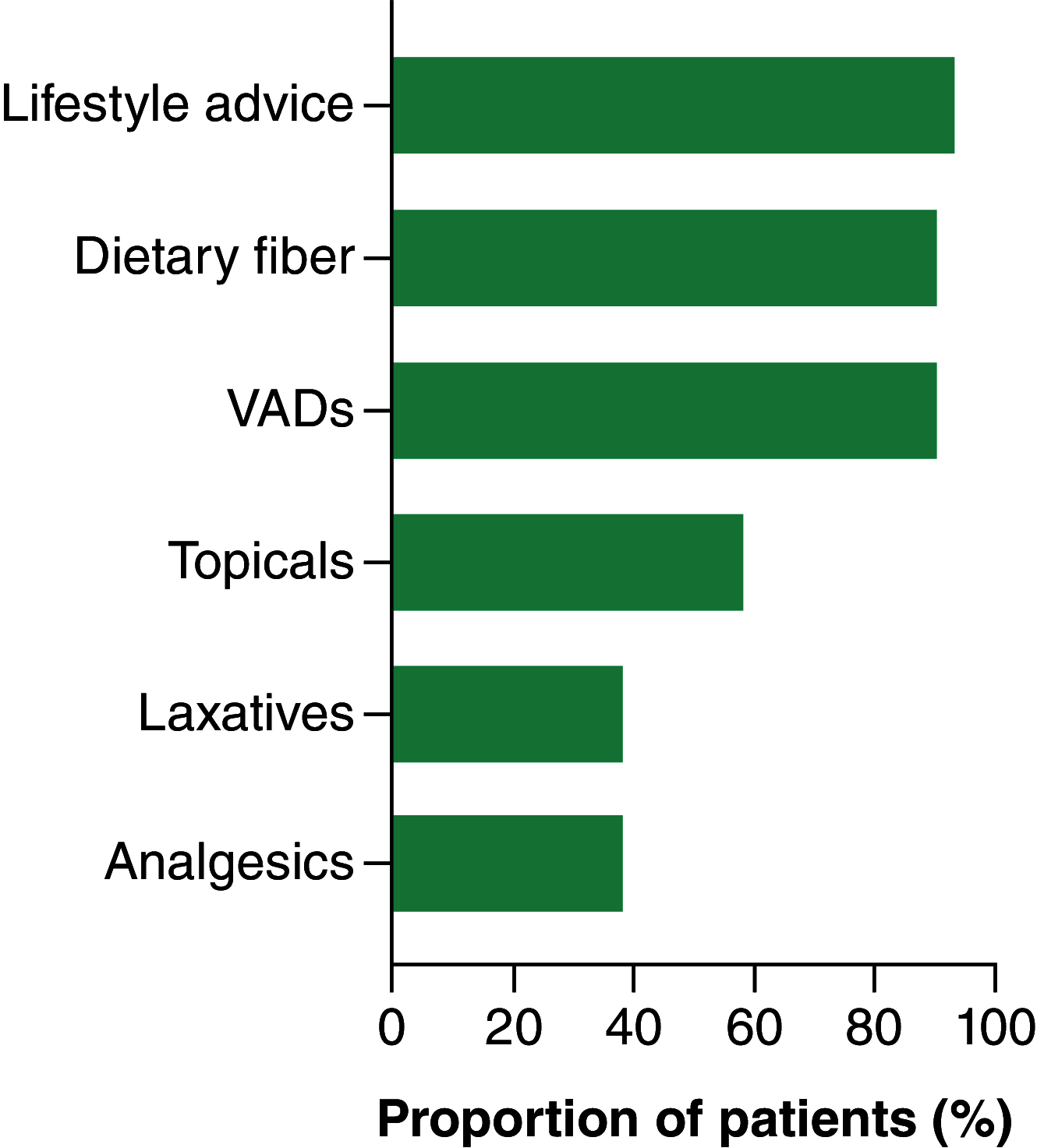An international observational study assessing conservative management in hemorrhoidal disease: results of CHORALIS (aCute HemORrhoidal disease evALuation International Study)
- PMID: 39132755
- PMCID: PMC11426285
- DOI: 10.57264/cer-2024-0070
An international observational study assessing conservative management in hemorrhoidal disease: results of CHORALIS (aCute HemORrhoidal disease evALuation International Study)
Abstract
Aim: Real-world evidence on the management of hemorrhoidal disease (HD) is limited. This international study collected clinical practice data on the effectiveness of conservative treatments for acute HD on symptoms and quality of life (QoL), providing perspectives of treatment modalities from different continents. Patients & methods: The 4-week observational prospective CHORALIS study involved adult outpatients consulting for spontaneous complaints of hemorrhoids (graded using Goligher classification) and prescribed conservative treatments according to usual clinical practice. Assessments were: anal pain/discomfort (visual analog scale [VAS]), other signs/symptoms (patient questionnaire), Patient Global Impression of Change (PGI-C) questionnaire and disease-specific QoL (HEMO-FISS-QoL questionnaire). Results: Of 3592 participants, 3505 were analyzed (58.4% male; age 40.5 ± 13.7 years; history of HD in 48.4%; 72.1% Goligher grade I and II). Pain and discomfort were the most common symptoms. Most treatments were venoactive drugs (VADs; 90.9%), particularly micronized purified flavonoid fraction (MPFF; 73.7%) and diosmin (14.6%). All VAD-based therapies improved signs/symptoms (number/intensity/frequency of pain, discomfort, bleeding, swelling, itching and soiling) and QoL. MPFF was associated with a significantly greater proportion of patients with no symptoms (48.8 vs diosmin 34.4%, p < 0.001), pain disappearance (69.7 vs diosmin 52.8%, p < 0.001), treatment impact at 1 week rated on PGI-C as 'very much better' (30.5 vs diosmin 17.9%, p < 0.001) and shorter times to improvement (mean ± SD 3.9 ± 1.5 days vs diosmin 4.2 ± 1.7 days). Conclusion: In this prospective real-world study of patients with acute HD, conservative therapies consisting mainly of VADs, including MPFF, improved the clinical signs and symptoms of disease, as well as QoL. This study evidence supports clinical advantages associated with VADs, mostly MPFF, for effectively managing acute HD.
Keywords: hemorrhoidal disease; micronized purified flavonoid fraction; patient satisfaction; quality of life; venoactive drugs.
Figures





References
-
- Johanson JF, Sonnenberg A. The prevalence of hemorrhoids and chronic constipation. An epidemiologic study. Gastroenterology 98(2), 380–386 (1990). - PubMed
Publication types
MeSH terms
LinkOut - more resources
Full Text Sources
Medical
